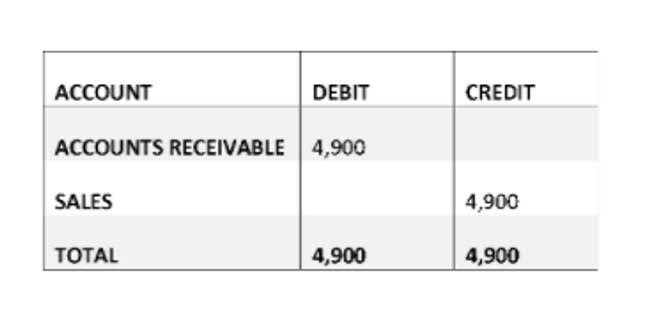
The entity that provides and controls the goods or services is called the principal. If an entity arranges for another party to provide goods or services, the arranging entity is called an agent. Get a crash course on creating a sales process flowchart right here. In just four steps, you’ll learn how to streamline your deal cycles and build healthier pipelines. Gross sales are an indication of how well or how poorly your sales team is performing because they show the number of total sales they’ve made.
- In the retail industry, one of the most important metrics to pay attention to is your gross sales.
- Gross margin is given in percentage rather than in monetary amount, and the higher it is, the better your company is generating profit.
- These deductions make the difference between net sales and gross sales.
- Now, at the time of purchase, the seller does not know how many buyers would make early payments.
- To effectively increase your company’s revenue, you need to measure your sales revenue properly.
Comparing Gross Sales and Net Sales
- Investors will see that as a net positive, as will others who examine your accounts.
- Usually, there are return authorizations in place to record the reason for a return.
- Companies that sell goods and services on credit might also include the net credit purchases—also called total net payables—in this section of their financial statements.
- While gross sales vs. net sales are terms that may be more familiar to accountants and investors, knowing what these mean as a salesperson or sales manager is still vital.
- Although gross sales do not accurately represent a company’s profits, they do provide a baseline for measuring important sales metrics.
- Your gross sales also give you a good idea of how many customers you’re getting in the door, so to speak, and how many of them are purchasing items once they’re there.
Companies adjust for write-offs or write-downs on inventory due to losses or damages. To avoid getting overwhelmed, use a sales CRM like Zendesk Sell to keep tabs on all the important metrics. Zendesk automates the measurement of sales metrics so you can focus on keeping your top and bottom lines strong. But they’re not the only sales metrics you should analyze and monitor regularly. As a sales manager, you can create a plan around working with other teams to address customer concerns and discuss ways to add value to increase profits. Read on to learn what distinguishes these metrics and how you can use both of them to understand and increase your revenue.
Gross sales are vital for calculating other sales metrics
Knowing how to calculate metrics yourself is a great way to get a better feeling for what the numbers are saying. Gross revenue and net revenue are distinct, but both are important for small businesses to track. However, if Company B were to purchase the wrenches from Company A and then sell them, it gains control of the wrenches, becoming the principal.
Use Pipedrive to manage your revenue
- Explore the crucial role of net sales in evaluating a company’s performance and learn how to calculate them in this comprehensive post.
- The principal in this relationship can claim revenue as gross, while the agent must claim revenue as net.
- The gross sales include any sales transactions that generate revenue and exclude all costs, expenses, and other charges.
- For example, as net income fluctuates, you can’t immediately tell why.
- With an overall view of your net sales, you can find ways to reduce deductions that cut profits or add incentives to encourage more sales.
- You may need to adjust your pricing, amend your product features, or upgrade your product quality to gain a competitive advantage.
In the same view, net sales gives insight into the effectiveness of your team’s sales tactics as well as the quality of your products or services. Using both gross and net sales, you can understand how well your sales team is performing and how they can sell better. Gross sales isn’t a particularly accurate metric when considering the health of a business or its sales processes. If you only consider gross sales — separate from the rest of an income statement — you might see a considerable overstatement of a company’s sales figures. Both gross and net revenue are key to getting a full view of your organization’s financial health.
Do gross sales include taxes?
One of your primary concerns is how to increase your company’s revenue. To effectively increase your company’s revenue, you need to measure your sales revenue properly. If your POS dashboard includes discounts and allowances, it might already calculate net sales for you, so you’ll need to figure that out on your own. This article cover what gross sales are, the difference between gross sales and net sales, and how to calculate gross sales for your business. We collaborate with business-to-business vendors, connecting them with potential buyers.
Gross Revenue Reporting
The period could be a quarter of a year, half a year, or a complete year. While gross sales refer to the revenue generated by a company, gross sales volume is the number of products sold to generate this number. Gross sales represent a monetary amount, while gross sales volume represents gross sales vs net sales a number of items. While gross sales refer to a company’s income from selling products, revenue covers other areas where a company might generate profit, like licensing and royalties. However, this difference is only relevant in companies that don’t rely on products solely for profit.

If a company provides full disclosure of its gross sales vs. net sales it can be a point of interest for external analysis. Net sales are calculated by deducting the cost of sales—allowances, discounts, and returns—from the total revenue. If your gross sales are high but net sales indicate that one of your products is being returned more than usual, you can use this information to identify what’s wrong. Then, you can make changes to provide a better product or service to your customers. Gross sales and net sales will feature in your financial statements, specifically as the top line on the company’s income statement (also known as a profit and loss statement). To calculate your gross sales, simply multiply the number of units you’ve sold by the unit price.
benefits of knowing your gross sales and net sales

